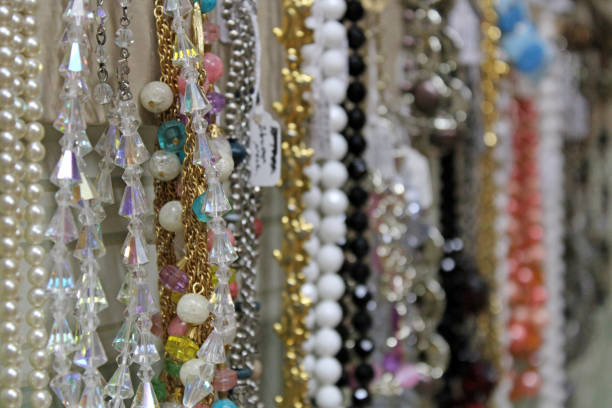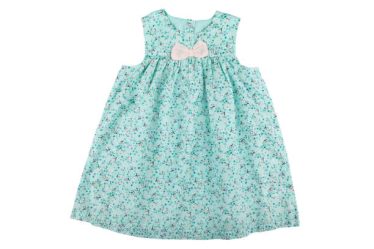
Jewellery, a timeless adornment, holds a special place in human history and culture. From ancient civilizations to modern societies, the significance and allure of jewelry have remained steadfast. In this article, we explore the rich tapestry of jewelry, past and present, tracing its evolution, cultural relevance, and prospects.
Importance of Jewellery Across Cultures
Throughout history, jewelry has transcended geographical boundaries and cultural divides. Across civilizations, jewelry has served as more than mere accessories; it has symbolized power, spirituality, and identity. From the intricate gold ornaments of ancient Egypt to the symbolic motifs of Indian bridal jewelry, each culture has its unique interpretation of adornment.
Symbolism of Jewellery
Jewellery often carries profound symbolism. From wedding bands symbolizing eternal love to religious pendants representing faith, the pieces we wear hold deep personal meanings. Moreover, jewelry can reflect societal norms and values, conveying messages of status, wealth, and affiliation.
Historical Evolution of Jewellery
Ancient Civilizations and Jewellery
The origins of jewelry can be traced back to ancient civilizations such as Mesopotamia, Egypt, and Greece. In these societies, jewelry was not only a form of personal adornment but also a symbol of wealth and social status. Intricate designs crafted from gold, silver, and precious gemstones adorned royalty and nobility, reflecting their luxury and power.
Medieval Jewellery Trends
During the Middle Ages, jewelry continued to evolve, with craftsmanship reaching new heights of sophistication. Medieval jewelry often featured religious motifs, reflecting the dominant influence of the church. Elaborate pieces adorned with enamel, pearls, and colored gemstones adorned the aristocracy, serving as symbols of prestige and piety.
Renaissance and Baroque Period Jewellery
The Renaissance and Baroque periods witnessed a flourishing of artistic expression in jewelry design. Inspired by classical motifs and the natural world, jewelers created intricate pieces characterized by ornate detailing and complicated gemstone settings. Baroque jewelry, in particular, embraced lavishness and extravagance, reflecting the opulent tastes of the era’s elite.
Revival of Jewellery in the Modern Era
Industrial Revolution and Mass Production
The Industrial Revolution revolutionized the jewelry industry, introducing mass production techniques that made jewelry more accessible to the masses. Advances in technology, such as the invention of the steam-powered press, enabled jewelers to produce intricate designs with greater efficiency and precision.
Art Nouveau and Art Deco Movements
In the late 19th and early 20th centuries, the Art Nouveau and Art Deco movements ushered in new aesthetics and design principles in jewelry. Art Nouveau jewelry celebrated organic forms and asymmetrical designs, drawing inspiration from nature and mythology. Meanwhile, Art Deco jewelry embraced geometric shapes and bold colors, reflecting the modernist spirit of the era.
Cultural Significance of Jewellery
Rituals and Ceremonies
Jewellery plays a central role in various rituals and ceremonies, marking significant milestones in people’s lives. From engagement rings exchanged during proposals to heirloom pieces passed down through generations, jewelry carries the weight of tradition and sentimentality.
Status and Wealth Symbolism
In many societies, jewelry serves as a visible marker of social status and wealth. From the crowns of monarchs to the diamond necklaces of Hollywood celebrities, certain pieces of jewelry have become iconic symbols of power and prestige.
Expression of Personal Style
Beyond its symbolic significance, jewelry allows individuals to express their style and identity. Whether it’s a statement necklace or a pair of vintage earrings, the pieces we choose to wear often reflect our tastes, values, and aspirations.
Materials and Techniques in Jewellery Making
Precious Metals and Gemstones
Jewellery can be crafted from a wide range of materials, including gold, silver, platinum, and precious gemstones such as diamonds, rubies, and sapphires. Each material offers its unique aesthetic qualities and symbolism, allowing jewelers to create pieces that resonate with their clients.
Traditional and Modern Techniques
The art of jewelry making encompasses a myriad of traditional and modern techniques, from handcrafted filigree to computer-aided design (CAD). Skilled artisans combine age-old craftsmanship with cutting-edge technology to create pieces that are both timeless and contemporary.
Global Trends in Jewellery Design
Influence of Fashion and Celebrity Culture
The world of fashion and celebrity culture exerts a significant influence on jewelry trends. From red-carpet events to social media influencers, celebrities showcase the latest styles and designs, driving consumer demand for statement pieces and designer collaborations.
Sustainable and Ethical Practices
In recent years, there has been a growing emphasis on sustainability and ethical practices in the jewelry industry. Consumers are increasingly conscious of the environmental and social impact of their purchases, leading to a demand for ethically sourced materials and transparent supply chains.
Future Prospects of Jewellery
Technological Advancements in Design and Production
Advances in technology, such as 3D printing and augmented reality, are revolutionizing the way jewelry is designed and produced. These innovations enable jewelers to create bespoke pieces tailored to individual preferences, blurring the lines between artistry and technology.
Changing Consumer Preferences
As consumer preferences evolve, jewelers must adapt to shifting tastes and trends. From minimalist designs to vintage-inspired classics, today’s consumers seek jewelry that reflects their unique personality and values. Customization and personalization are becoming increasingly important as consumers seek meaningful connections with the pieces they wear.
Conclusion
In conclusion, jewelry remains a timeless expression of human creativity, culture, and identity. From its humble beginnings in ancient civilizations to its continued evolution in the modern era, jewelry continues to captivate and inspire. As we look to the future, the possibilities for innovation and creativity in jewelry design are endless, ensuring that this age-old art form will continue to enchant generations to come.


